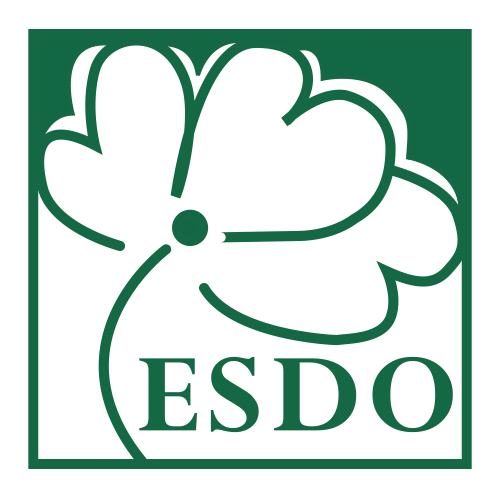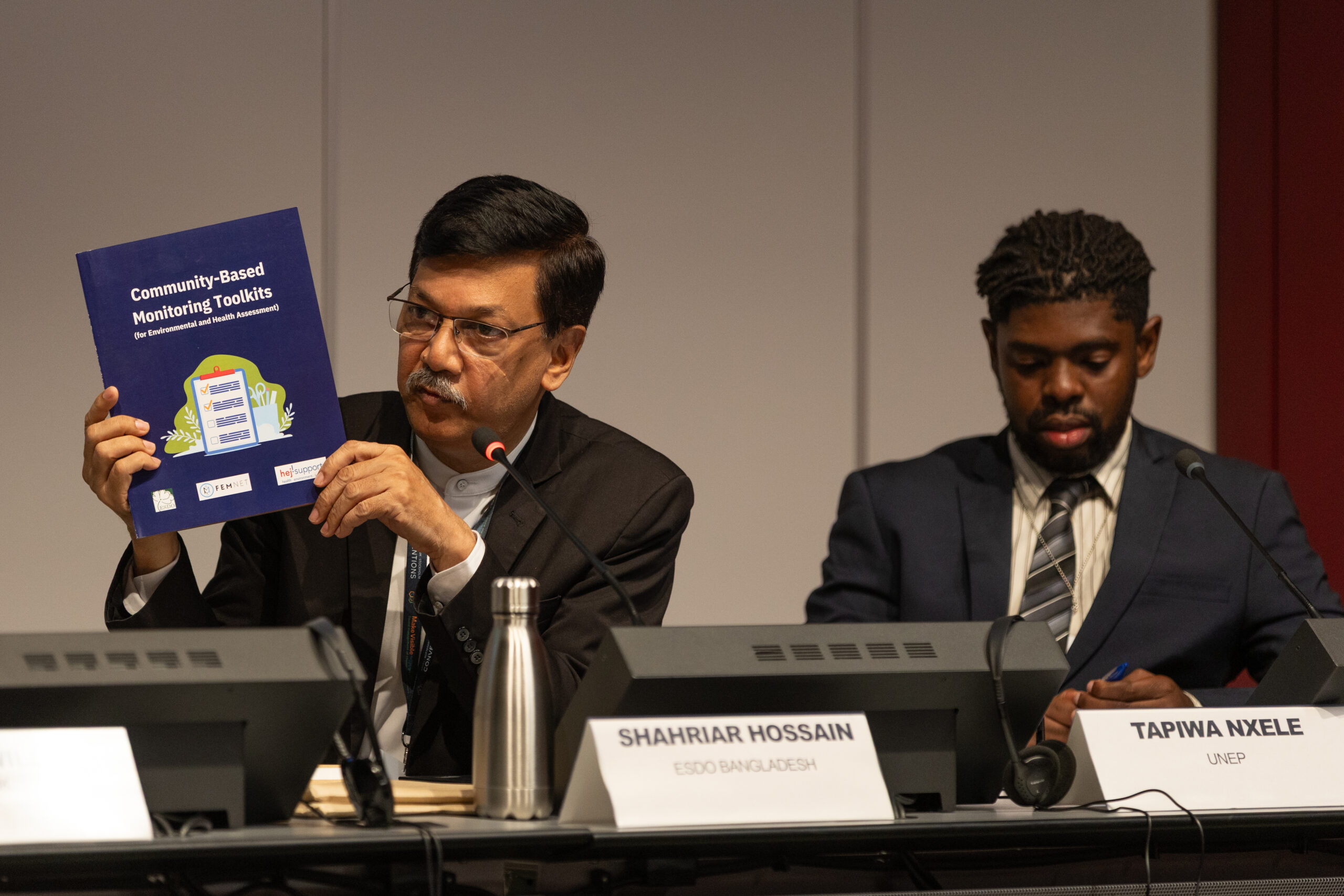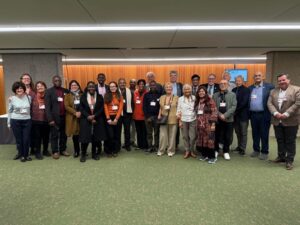On 4 May 2025, the Environment and Social Development Organization (ESDO) Bangladesh, in partnership with UNEP, GRID-Arendal, the BRS Conventions Secretariat, and the Basel Convention Plastic Waste Partnership, organized a critical side event titled “Advancing Global Action for Sustainable Textiles: Addressing Hazardous Chemicals Across the Textile Lifecycle” during the BRS COPs. The event took place in Room C of the SICG International Center in Geneva, Switzerland, bringing together experts, policymakers, and civil society representatives to address the urgent environmental and health challenges posed by hazardous chemicals in the textile industry.
The textile sector, while a major driver of economic growth and employment, particularly for women, is also a significant source of pollution. The industry generates approximately 92 million tonnes of waste annually, contributing to 9% of global microplastic pollution. An estimated 15,000 chemicals are used in textile manufacturing, many of which are hazardous and persist throughout the supply chain, posing severe risks to human health and the environment. The event aimed to highlight these issues and explore solutions through enhanced global governance, policy frameworks, and community-led initiatives.
The program began with opening remarks from Ms. Jewel Batchasingh, Director of the BCRC Caribbean, who set the stage for discussions. Mr. Rolph Payet, Executive Secretary of the BRS Conventions, delivered a keynote address, emphasizing the need for integrated solutions to balance the textile industry’s economic benefits with its environmental costs. Ms. Ieva Rucevska, a senior expert at GRID-Arendal, provided a comprehensive overview of the global impacts of textile waste, presenting data on chemical exposure risks from the 15,000+ substances used in production and their environmental persistence.
A panel discussion, moderated by Ms. Batchasingh, featured insights from Dr. Shahriar Hossain of ESDO Bangladesh, who highlighted specific case studies, including the devastating impacts on communities like Nayanjhali Khal in Bangladesh, where uncontrolled textile waste dumping has destroyed local ecosystems and public health. He emphasized Bangladesh’s potential to lead in sustainable textiles but stressed the need for stronger governance and political transparency. Dr. Hossain showcased ESDO’s Community-Based Monitoring (CBM) toolkit, which empowers local communities to report pollution and hold industries accountable. Representatives from governments and the textile sector also discussed strategies to phase out hazardous chemicals and implement extended producer responsibility (EPR) schemes.
The event included a documentary screening by ESDO, exposing the dire consequences of textile waste on vulnerable populations, particularly children and the elderly. A Q&A session with the audience further explored scalable solutions, such as aligning textile waste management with the Basel Convention’s plastic amendments and the Stockholm Convention’s listings of persistent organic pollutants (POPs).
Dr. Farhina Ahmed, Secretary of the Bangladesh Ministry of Environment, delivered the closing remarks, reaffirming Bangladesh’s commitment to sustainable textile practices and calling for global collaboration to address these challenges.
The event underscored the need for urgent action to regulate hazardous chemicals in textiles, empower affected communities, and integrate textile waste management into international frameworks like the BRS Conventions and the Global Framework on Chemicals (GFC). ESDO’s initiatives, such as the CBM toolkit, demonstrated the power of grassroots advocacy in driving systemic change. Moving forward, stakeholders pledged to advocate for stronger policies, expand multi-stakeholder partnerships, and ensure the textile industry transitions toward sustainability.



